A Place Where Soul Meets Body
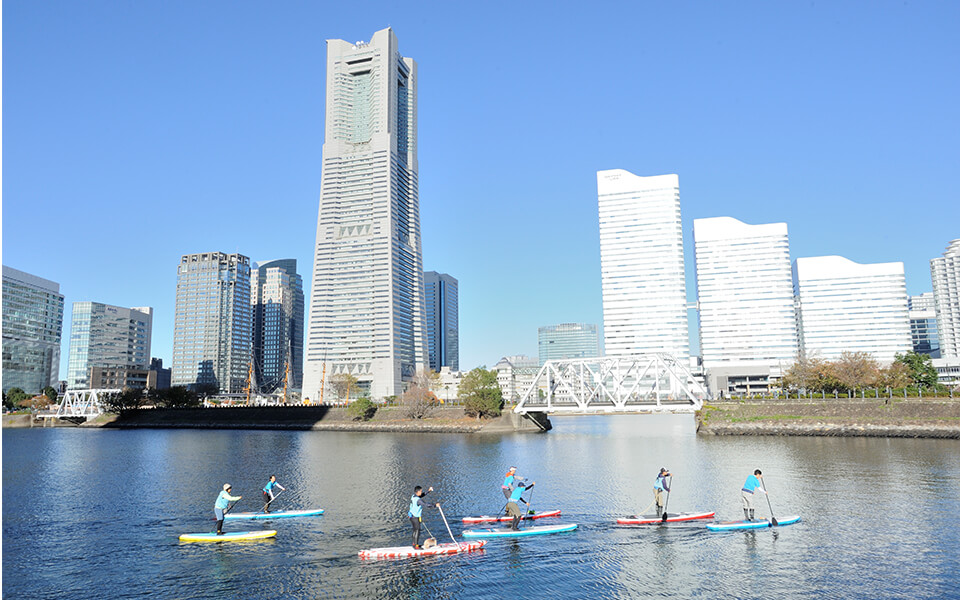
With new experiences come new perspectives.
Take the city by SUP and discover a face of Yokohama you didn’t know existed.
It’s late fall. If you want to explore a different side of Yokohama while still in the city, visit Mizube-so on the banks of Ooka River. Mizube-so is a community organization whose headquarters are located within a row of old buildings on the riverside. The recreational organization is all about SUP (or standup paddleboarding), an activity recently surging in popularity. In a single day, you can receive a lesson in basic SUP techniques and paddle from the “river station” known as Sakura Bridge, all through Ooka River, whose water is so clear you can actually see down to its riverbed. Riding on the water’s surface, paddles in hand, you begin to revel in an altogether new face of Yokohama. In one moment, you’re gazing up at passing figures upon the bridge; not even 15 minutes pass and you’re face to face with the port city’s famed Minatomirai waterfront and its open sea. All that enters your sight shines in its own light. Hawaii may be the birthplace of SUP, but the water sport is gaining traction worldwide. Not only is it a newfound recreational activity for many, but in places in London’s River Thames, SUP tours are becoming more commonplace, and some also consider the possibility of wielding SUP as a new form of transportation in cities. In any case, consider trying the sport out on a free weekend—it’ll surely open you up to a new vision of the world around you.
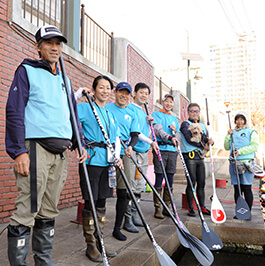
Mizube-so
2-163-4 Hinodecho, Naka-ku, Yokohama
https://mizube.so/en/
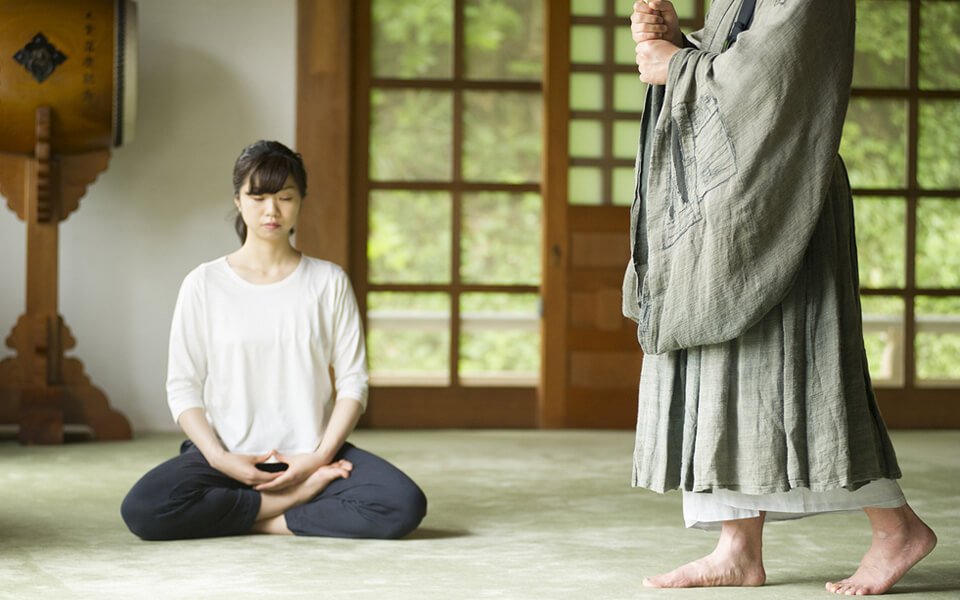
Meditate and forego the woes of daily life at this 800-year-old Zen temple.
There’s a famous Japanese lexeme: kenzen-ichinyo, which roughly translates to “oneness of the sword and Zen.” Famed samurai Musashi Miyamoto’s mentor and Zen priest Osho Takuan created the expression. It reflects the inherent relationship between the practice of the sword—its confrontation with life and death—and teachings within Zen Buddhism, such as freeing oneself from worldly thoughts. There’s nothing more difficult than remaining calm in life-and-death situations. Those who learn to confront challenges with a firm and unwavering spirit have the potential to become, at once, the most powerful and peaceful individuals among us.
This is perhaps why modern businesspeople, exposed to fierce competition, turn to meditation for solutions. Yokohama has seen a recent boom in such practices; starting about 40 years ago, people have gathered for group meditations at Tokozenji, a temple in Kanazawa-Bunko, a nature-rich area in southern Yokohama just 15 minutes from Yokohama Station by train. The young assistant priest at this temple trained at Kyoto’s Kenninji and Kamakura’s Kenchoji, where he studied the Rinzai sect of Buddhism. A somewhat eccentric figure, he was originally drawn to international diplomacy, acquiring a masters degree in social sciences in the Netherlands before embarking on various global efforts to provide aid to developing countries. Zen traditions are alive and well in places like America, Germany and France, and Tokozenji is a foreigner-friendly temple which offers teachings in English as well as Japanese. It’s said that in Sanskrit, the word “temple” refers to a place where one goes to enlighten one’s soul. In a tumultuous and rapidly changing time, then, enlightenment is exactly what we need.
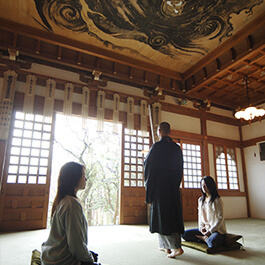
Hakusan Tokozenji
2-40-8 Kamariyaminami, Kanazawa-ku, Yokohama
Tel: 045-781-0271
https://www.tokozenji.or.jp/english
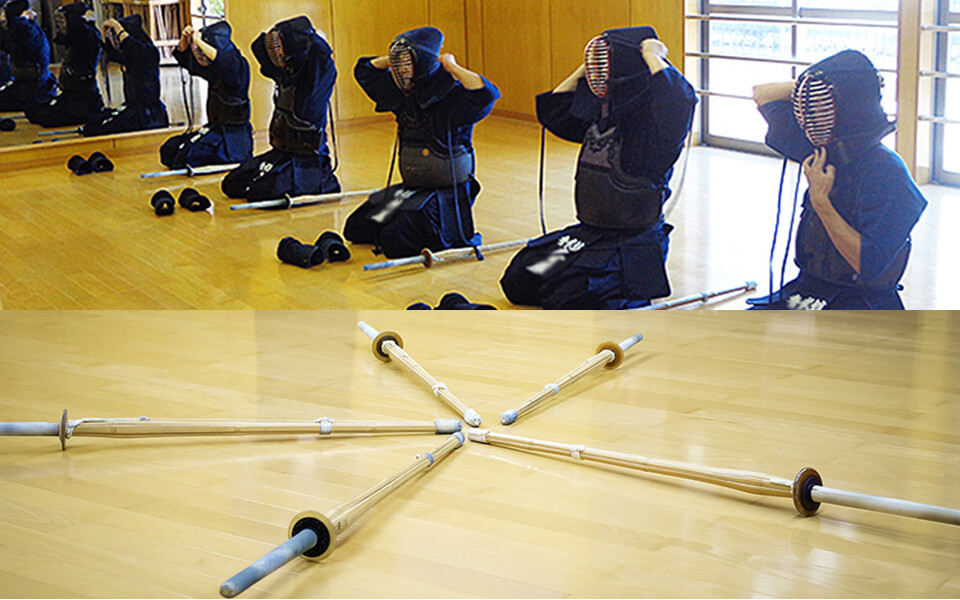
Practice the beauty of form through kendo in Yokohama, the heart of the Meiji Restoration.
When it comes to kendo, a traditional Japanese martial art, images of bamboo swords (shinai) and other protective gear may come to mind. The beauty of form is very much inherent in age-old Japanese traditions, such as sadou (tea ceremony) and kadou (flower arrangement), all of which induce in people a deep sense of admiration. The expert mixing of tea within a tea ceremony, the astute stature of a swordsman beholding his sword—both actions require a level of spiritual discipline. Though many people admire kendo, those who actually try it out are few and far between. However, your dream may just come true in Yokohama, where you can experience, for the first time perhaps, the art of kendo. Yokohama, the site of the Meiji Restoration and one of Japan’s primary ports during this period, is home to many kendo schools (known as kendo-jo, or dojo for short). On top of that, the shinai swords here are particularly durable and technically advanced.
Take Shuubukan Keishin Dojo in Hinodecho, a lively city with a bustling culinary scene just five minutes from Yokohma by train. The dojo’s director, Keiko Hoshino, is a seventh-dan kendo instructor who won the Otsuhai tournament, a women’s kendo tournament held in honor of famed samurai Musashi Miyamoto, two years in a row. Technical achievement in kendo is measured by advancement in grade or rank, known as “dan.” Seventh-dan is the penultimate ranking, indicating extreme mastery in the sport. The dojo is committed to helping students reach a kendo dan, whether they be young beginners, and there are also many students who are just starting out in their 50s and 60s. Rather than fuss over competition results as if you’re in your schooldays, this dojo allows students to learn at their own pace, making it the perfect learning grounds for adults. The dojo is a true representation of what it means to train and master the art of kendo in Yokohama.
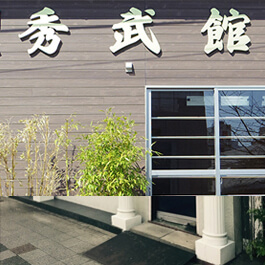
Shuubukan Keishin Dojo
2-164-1 Hinodecho Naka-Ku Yokohama
Tel: 045-231-023099
http://shuubukan06.webcrow.jp/
